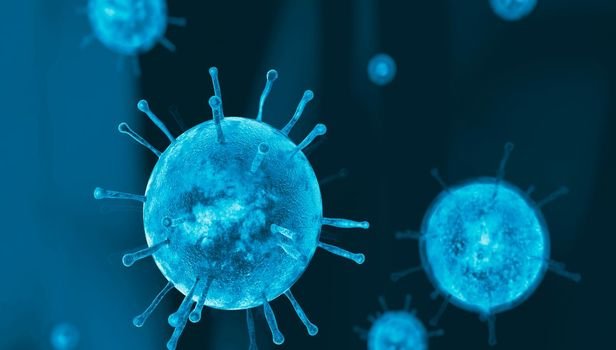Nipah virus infection: Signs and symptoms, Risks, Diagnosis, Prevention and Treatment
06 Jun 2018 ( IBTN News Bureau )
Nipah virus infection (NiV) is a viral infection caused by the Nipah virus. Symptoms from infection vary from none to fever, cough, headache, shortness of breath, and confusion. This may worsen into a coma over a day or two. Complications can include inflammation of the brain and seizures following recovery.
The Nipah virus is a type of RNA virus in the genus Henipavirus. It can both spread between people and from other animals to people. Spread typically requires direct contact with an infected source. The virus normally circulates among specific types of fruit bats. Diagnosis is based on symptoms and confirmed by laboratory testing.
Management involves supportive care. As of 2018 there is no vaccine or specific treatment. Prevention is by avoiding exposure to bats and sick pigs and not drinking raw date palm sap. As of May 2018 about 700 human cases of Nipah virus are estimated to have occurred and 50 to 75 percent of those who were infected died. In May 2018, an outbreak of the disease resulted in at least 18 deaths in the Indian state of Kerala.
The disease was first identified in 1998 during an outbreak in Malaysia while the virus was isolated in 1999. It is named after a village in Malaysia, Sungai Nipah. Pigs may also be infected and millions were killed in 1999 to stop the spread of disease.
Signs and symptoms
The symptoms start to appear within 3-14 days after exposure. Initial symptoms are fever, headache, drowsiness followed by disorientation and mental confusion. These symptoms can progress into coma as fast as in 24-48 hours. Encephalitis, inflammation of the brain, is a potentially fatal complication of nipah virus infection. Respiratory illness can also be present during the early part of the illness. Nipah-case patients who had breathing difficulty are more likely than those without respiratory illness to transmit the virus. The disease is suspected in symptomatic individuals in the context of an epidemic outbreak.
Risks
The risk of exposure is high for hospital workers and caretakers of those infected with the virus. In Malaysia and Singapore, Nipah virus infection occurred in those with close contact to infected pigs. In Bangladesh and India, the disease has been linked to consumption of raw date palm sap (toddy) and contact with bats.
Diagnosis
Laboratory diagnosis of Nipah virus infection is made using reverse transcriptase polymerase chain reaction (RT-PCR) from throat swabs, cerebrospinal fluid, urine and blood analysis during acute and convalescent stages of the disease. IgG and IgM antibody detection can be done after recovery to confirm Nipah virus infection. Immunohistochemistry on tissues collected during autopsy also confirms the disease. Viral RNA can be isolated from the saliva of infected persons.
Prevention
Prevention of Nipah virus infection is important since there is no effective treatment for the disease. The infection can be prevented by avoiding exposure to bats in endemic areas and sick pigs. Drinking of raw palm sap (palm toddy) contaminated by bat excrete, eating of fruits partially consumed by bats and using water from wells infested by bats should be avoided. Bats are known to drink toddy that is collected in open containers, and occasionally urinate in it, which makes it contaminated with the virus. Surveillance and awareness are important for preventing future outbreaks. The association of this disease within reproductive cycle of bats is not well studied. Standard infection control practices should be enforced to prevent nosocomial infections. A subunit vaccine using the Hendra G protein was found to produce cross-protective antibodies against henipavirus and nipavirus has been used in monkeys to protect against Hendra virus, although its potential for use in humans has not been studied.
Treatment
Currently there is no effective treatment for Nipah virus infection. The treatment is limited to supportive care. It is important to practice standard infection control practices and proper barrier nursing techniques to avoid the transmission of the infection from person to person. All suspected cases of Nipah virus infection should be isolated and given intensive supportive care. Ribavirin has been shown effective in in vitro tests, but has not yet been proven effective in humans. Passive immunization using a human monoclonal antibody that targets the Nipah G glycoprotein has been evaluated in the ferret model as post-exposure prophylaxis. The anti-malarial drug chloroquine was shown to block the critical functions needed for maturation of Nipah virus, although no clinical benefit has yet been observed. m102.4, a human monoclonal antibody, has been used in people on a compassionate use basis in Australia and is presently in pre-clinical development.
Outbreaks
Nipah virus outbreaks have been reported in Malaysia, Singapore, Bangladesh and India. The highest mortality due to Nipah virus infection has occurred in Bangladesh. In Bangladesh, the outbreaks are typically seen in winter season. Nipah virus first appeared in Malaysia in 1998 in peninsular Malaysia in pigs and pig farmers. By mid-1999, more than 265 human cases of encephalitis, including 105 deaths, had been reported in Malaysia, and 11 cases of either encephalitis or respiratory illness with one fatality were reported in Singapore. In 2001, Nipah virus was reported from Meherpur District, Bangladesh and Siliguri, India. The outbreak again appeared in 2003, 2004 and 2005 in Naogaon District, Manikganj District, Rajbari District, Faridpur District and Tangail District. In Bangladesh, there were also outbreaks in subsequent years.
In May 2018, an outbreak was reported in the Kozhikode district of Kerala, India. Eighteen deaths have been recorded, including one healthcare worker. Those who have died are mainly from the districts of Kozhikode and Malappuram, including a 31-year-old nurse, who was treating patients infected with the virus. As of 31 May 2018, about 16 people are being quarantined because they had contact with the sick. This incident has caused panic throughout the state. Blood samples have been sent for testing. India is seeking help from Australia by importing monoclonal antibodies to a Nipah virus antigen. However, the treatment is experimental and has not yet been tested on humans. India is also importing ribavirin tablets from Malaysia.
(Click here for Android APP of IBTN. You can follow us on facebook and Twitter)
Share This News
About sharing
-
 16 May 2025
Will artificial intelligence replace teachers in classrooms?
16 May 2025
Will artificial intelligence replace teachers in classrooms?
Will artificial intelligence replace teachers in classrooms?
May...
-
 16 May 2025
"I'm killing those kids, my tax money is doing that" Omar El Akkad on West’s role in Gaza
16 May 2025
"I'm killing those kids, my tax money is doing that" Omar El Akkad on West’s role in Gaza
"I'm killing those kids, my tax money is doing that" Omar El Akkad on...
-
 15 May 2025
Trump showers his Qatari hosts with praise at state dinner
15 May 2025
Trump showers his Qatari hosts with praise at state dinner
Trump showers his Qatari hosts with praise at state dinner
May 1...
-
 14 May 2025
Trump visits Qatar as US envoy hints at Gaza progress, quiet diplomacy dominates meeting
14 May 2025
Trump visits Qatar as US envoy hints at Gaza progress, quiet diplomacy dominates meeting
Trump visits Qatar as US envoy hints at Gaza progress, quiet diplomacy dominates me...
-
 11 May 2025
What can be learned from the latest conflict between India and Pakistan?
11 May 2025
What can be learned from the latest conflict between India and Pakistan?
What can be learned from the latest conflict between India and Pakistan?



